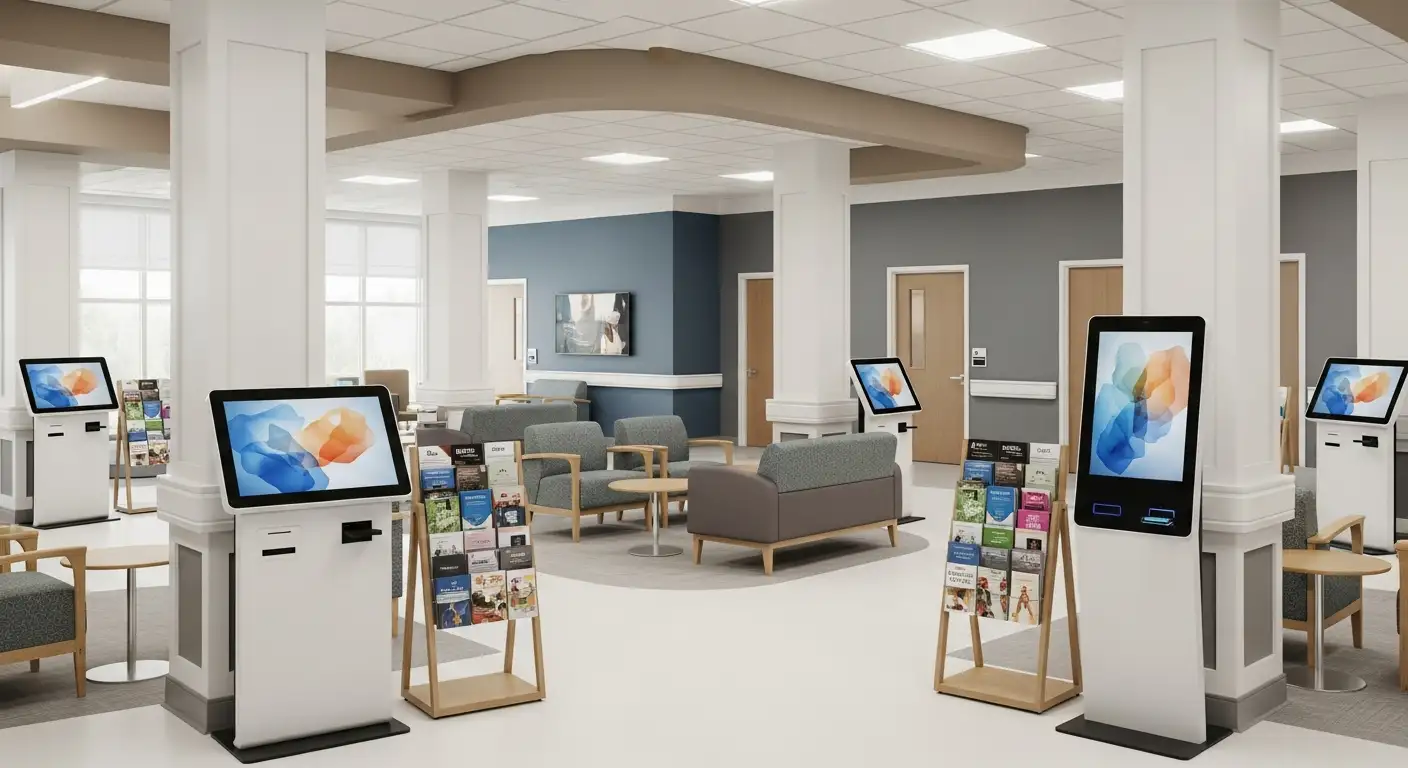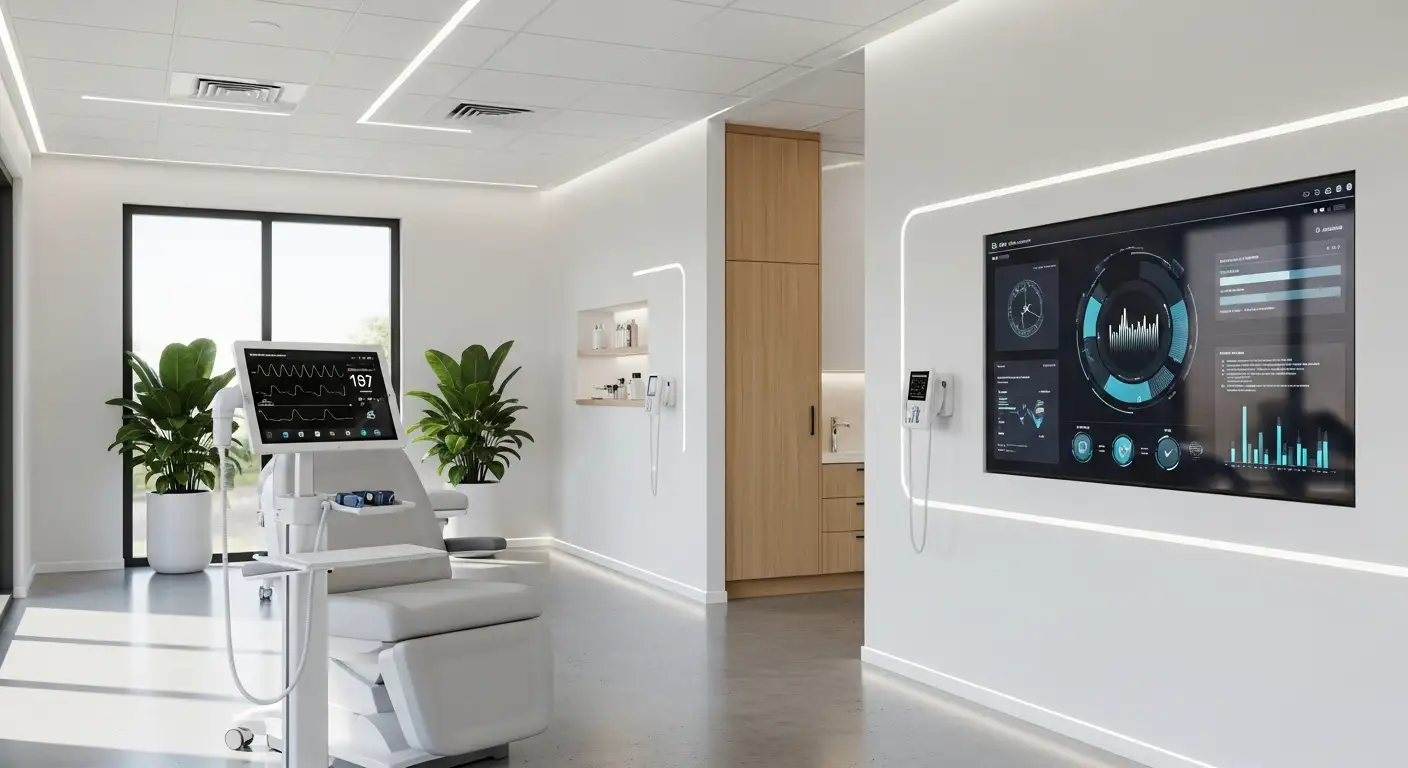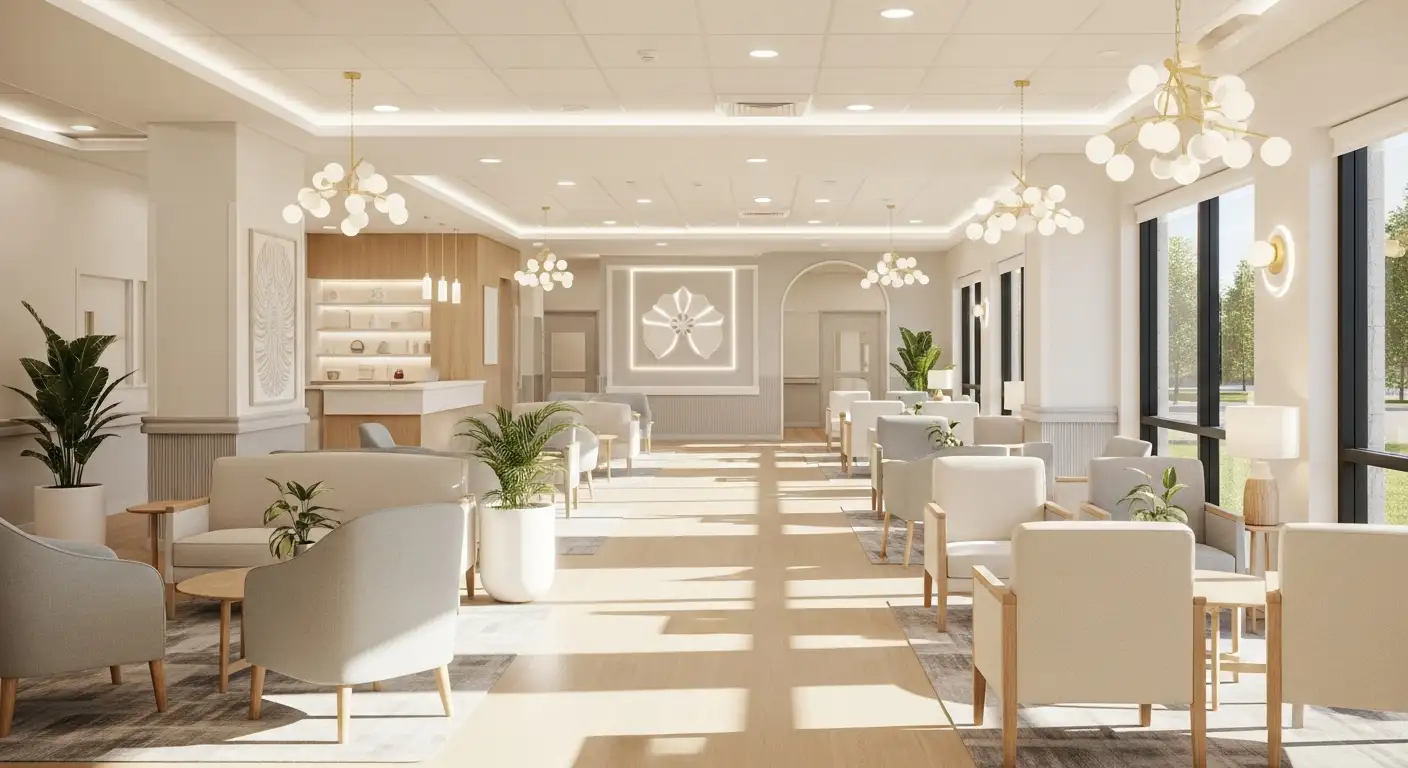What Makes VitalTrak Different from Traditional Telemedicine
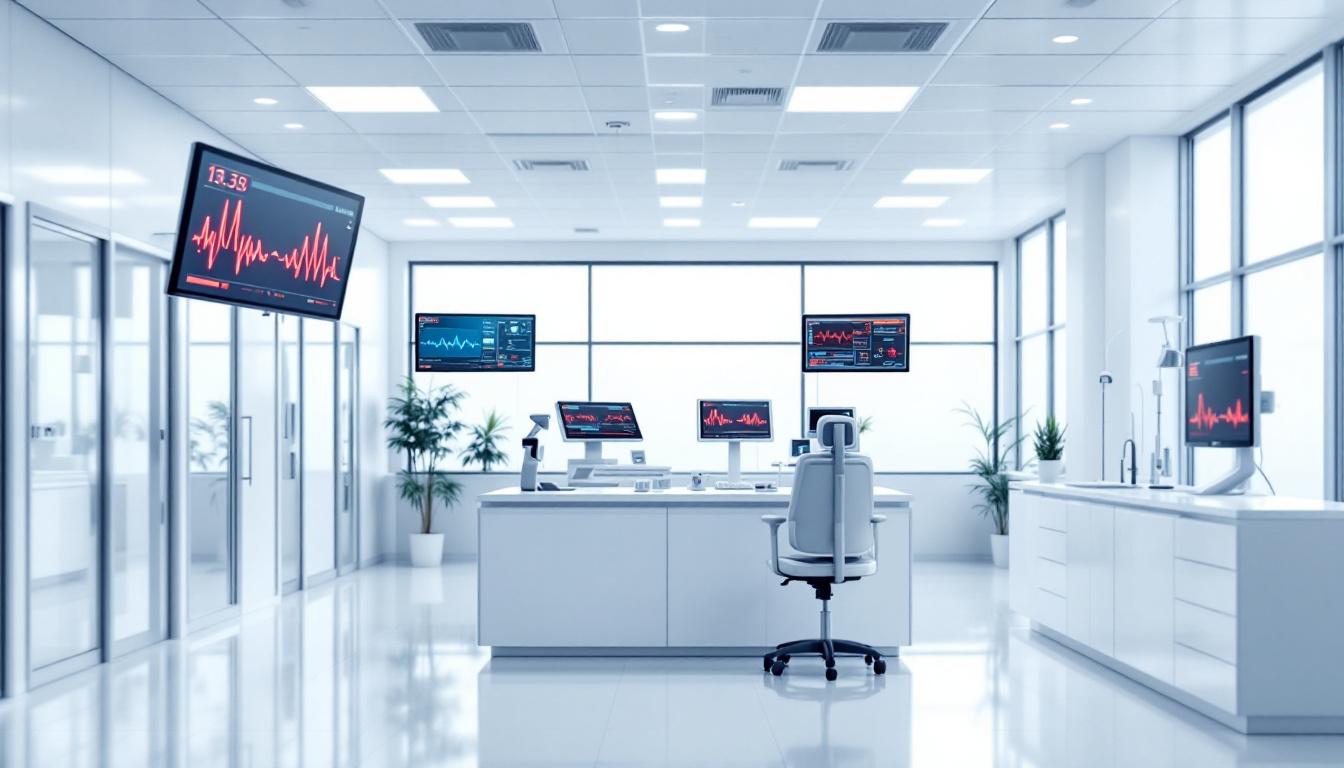
Transforming Telemedicine through Advanced Monitoring
As healthcare continues to evolve with technology, VitalTrak emerges as a groundbreaking leader in remote patient monitoring. Unlike traditional telemedicine, which primarily involves scheduled virtual consultations, VitalTrak harnesses continuous, real-time data collection and innovative analytics to provide a proactive approach to healthcare. This article explores how VitalTrak stands apart from conventional systems and why it represents the future of remote health management.
The Evolution from Traditional Telemedicine to Continuous Monitoring

How does traditional telemedicine differ from systems like VitalTrak?
Traditional telemedicine mainly involves virtual consultations where patients connect with healthcare providers for diagnoses, advice, or treatment plans through digital platforms. These interactions typically focus on one-off or scheduled visits, often without continuous data collection. In contrast, VitalTrak represents a leap forward by integrating remote patient monitoring (RPM) technology, allowing for the continuous collection and transmission of health data.
VitalTrak and similar advanced systems go beyond basic virtual visits by providing real-time, ongoing surveillance of vital signs like heart rate, blood pressure, and glucose levels. This continuous stream of information helps clinicians monitor health status dynamically, identify issues immediately, and tailor care more precisely.
Why is continuous data collection important in remote healthcare, and how can VitalTrak assist?
Continuous data collection plays a crucial role in modern remote healthcare because it enables early detection of health problems before symptoms become severe. For patients with chronic conditions like diabetes or heart disease, ongoing monitoring reduces the risk of hospitalizations by alerting doctors to changes in health metrics quickly.
VitalTrak facilitates this process by offering integrated devices such as wearables and sensors that capture health data 24/7. These devices transmit information via wireless technology like Wi-Fi or LTE directly to healthcare providers. This continuous knowledge base not only allows for timely interventions but also helps in establishing long-term health trends, leading to better clinical decisions.
Furthermore, the constant flow of data boosts patient involvement in their own care. Patients become more engaged and confident, seeing tangible insights into their health, which encourages proactive self-management.
Medioh, a provider of RPM solutions, supports the deployment and management of these devices, ensuring compliance with regulations like HIPAA and FDA standards. Their services include handling device logistics, data integration, and providing detailed performance reports, simplifying the operational challenges of remote monitoring infrastructures.
In summary, shifting from traditional telemedicine to continuous monitoring systems like VitalTrak enhances healthcare by enabling real-time, proactive, and personalized care, ultimately leading to better health outcomes and higher patient satisfaction.
Unique Features and Benefits of VitalTrak in Remote Healthcare
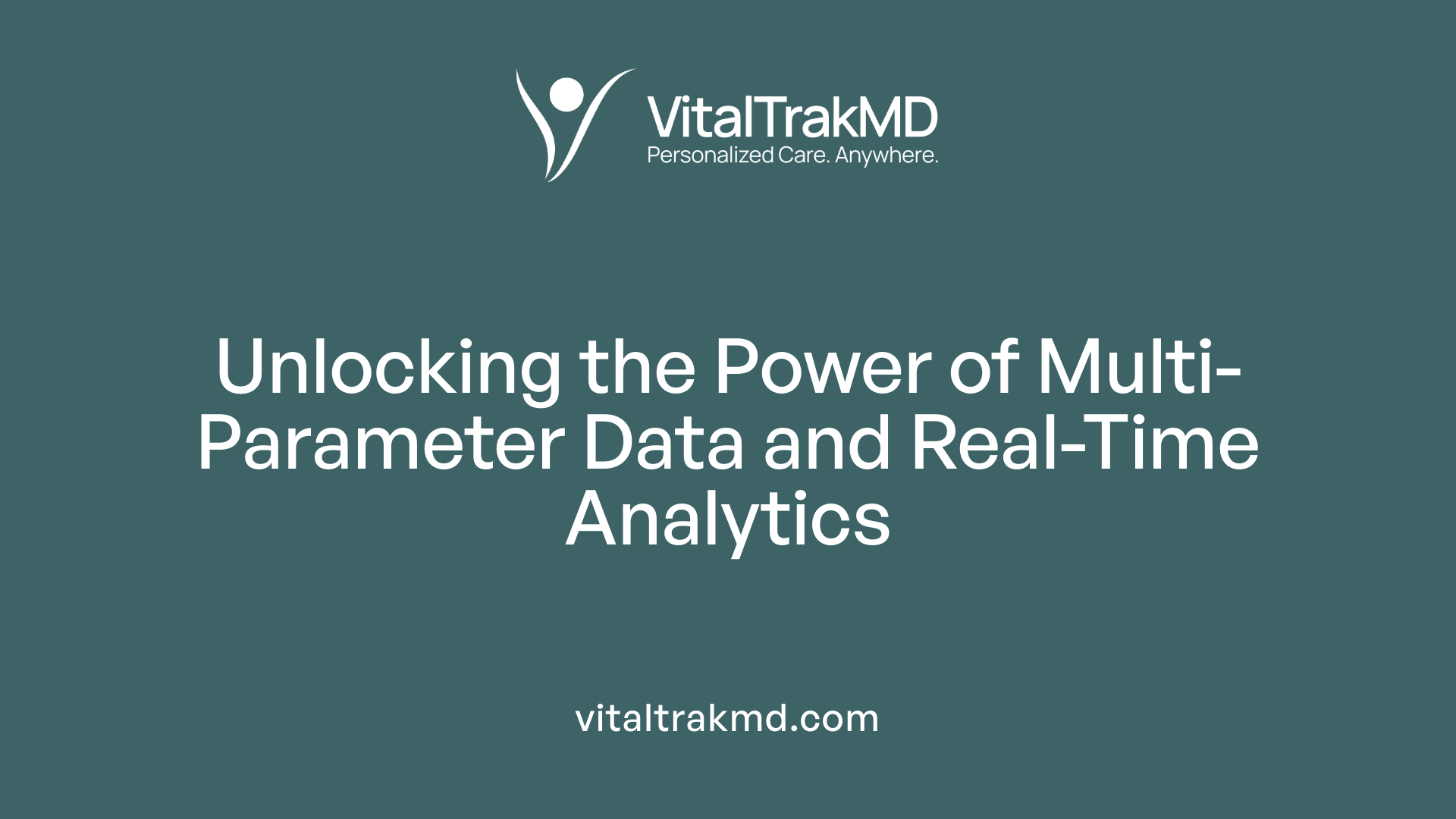
What are the unique features and benefits of VitalTrak in remote healthcare?
VitalTrak stands out in the field of remote healthcare through its integration of advanced sensor technology and comprehensive monitoring capabilities. The system employs proprietary sensors like VitalSense™, which can accurately measure multiple vital signs simultaneously without the need for calibration. This allows for hospital-grade precision in a portable, user-friendly device setup.
The platform supports continuous multi-parameter monitoring, including blood pressure, heart rate, and other health metrics, providing healthcare providers with real-time, detailed data. It also offers proactive analytics, such as early warning scores and fall detection alerts, which enable timely interventions before health issues escalate.
By enhancing patient engagement through accessible devices like the Pro+ blood pressure monitor and VitalPatch wearable sensors, VitalTrak promotes proactive management of chronic conditions and reduces unnecessary hospital visits. Its ability to deliver actionable insights not only improves clinical outcomes but also helps lower healthcare costs.
In summary, VitalTrak combines reliable multi-parameter monitoring with sophisticated data analytics, offering a significant leap forward in remote patient care. Its features support early diagnosis, better patient outcomes, and more efficient healthcare delivery, making it a valuable tool for modern telemedicine.
Differentiating Remote Patient Monitoring From Telemedicine
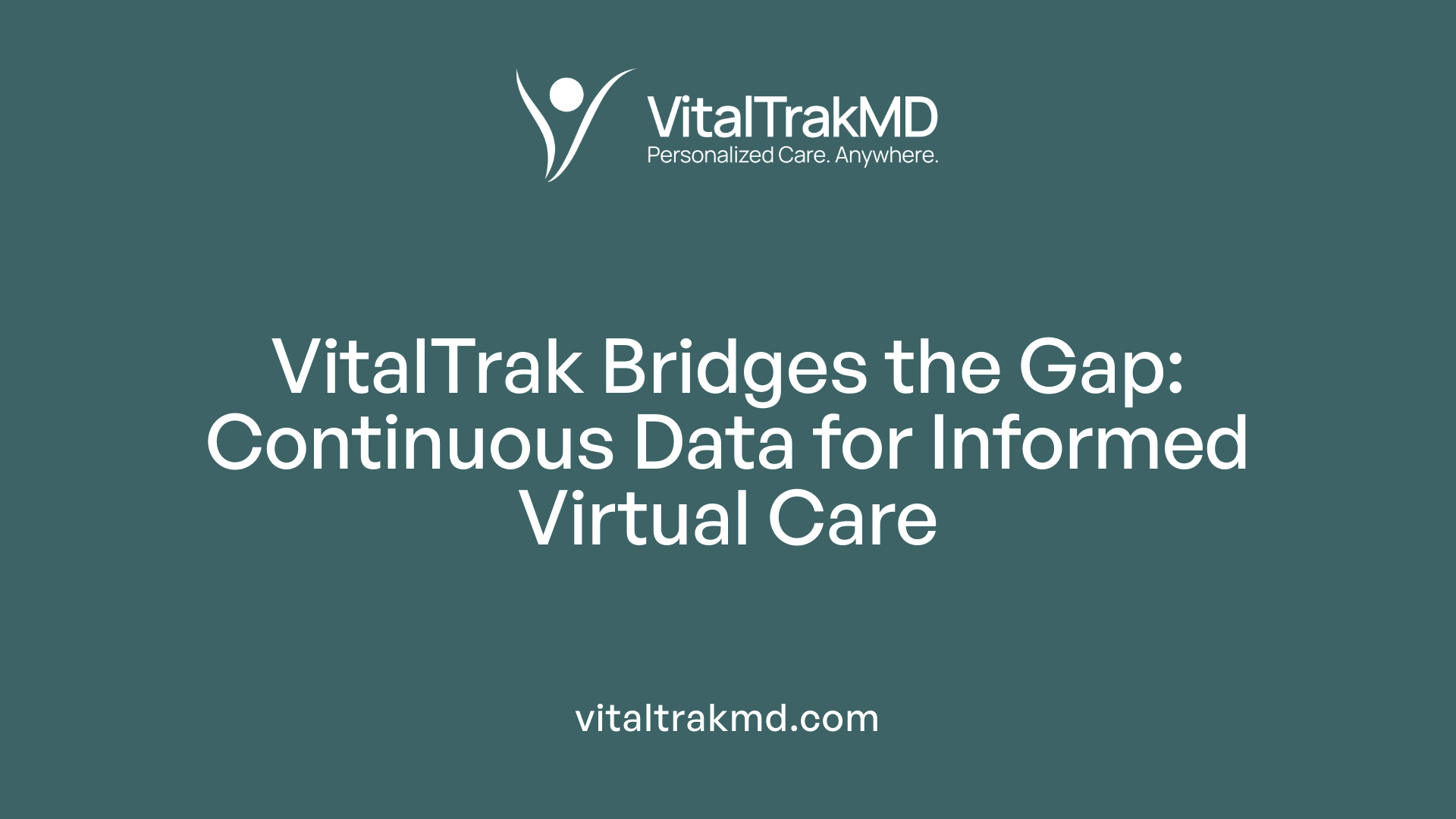
How does remote patient monitoring differ from telemedicine, and what role does VitalTrak play?
Remote patient monitoring (RPM) and telemedicine are both innovative ways to improve healthcare delivery, but they serve different purposes. RPM is centered around the continuous collection and transmission of patients' physiological data outside of traditional clinical settings. This involves using devices such as Bluetooth sensors, wearables, and Internet of Things (IoT) technology to track vital signs like heart rate, blood pressure, and glucose levels in real-time.
In contrast, telemedicine primarily involves virtual consultations through video calls, audio interactions, or electronic messaging. It allows patients and providers to communicate directly without needing to be in the same physical location. Telehealth, a broader term, includes telemedicine but also encompasses other digital health services like remote psychotherapy, remote diagnostics, and store-and-forward telehealth solutions.
RPM plays a vital role in managing chronic diseases, early detection of health issues, and reducing hospitalizations. By continuously monitoring health data, healthcare providers can intervene promptly if needed, thereby preventing complications.
VitalTrak is a distinguished provider of RPM solutions. The company offers devices and supporting platforms, such as the HIPAA-compliant Evelyn system, designed for large-scale remote monitoring programs. VitalTrak's solutions enhance patient engagement, streamline data collection, and improve clinical outcomes by integrating vital data into existing health records and care plans.
In summary, while telemedicine facilitates virtual direct contact between patients and healthcare providers, RPM supplies the essential data that makes such virtual care more informed and effective. Together, these technologies improve healthcare accessibility, quality, and efficiency.
How VitalTrak Transcends Traditional Telemedicine Approaches
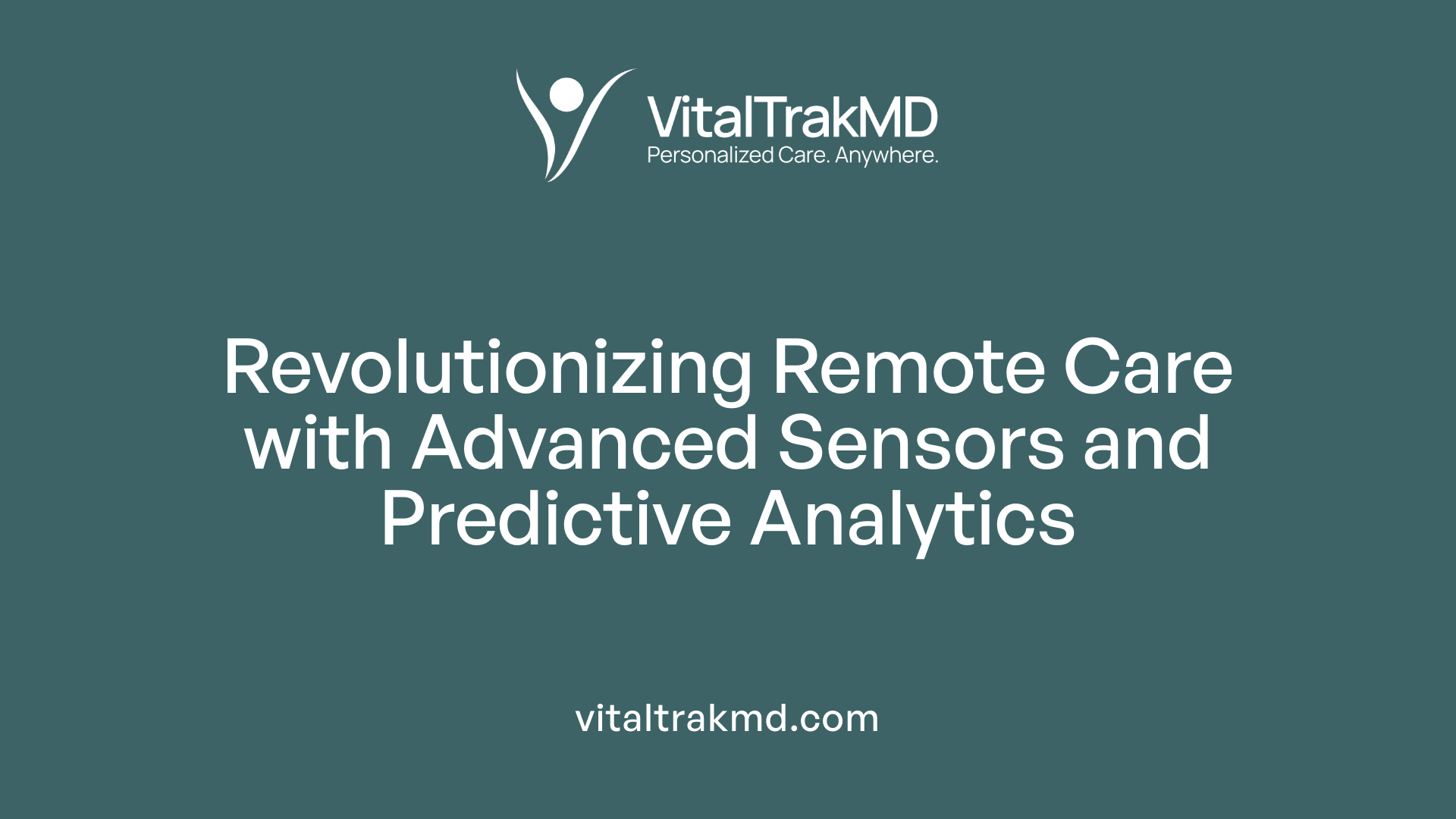
What makes VitalTrak different from traditional telemedicine approaches?
VitalTrak sets itself apart from conventional telemedicine systems through its adoption of advanced sensors and real-time data analytics. While traditional telemedicine typically relies on virtual consultations — like video calls or phone visits — VitalTrak continuously collects patient health data outside these scheduled interactions. This includes vital signs such as blood pressure, heart rate, and glucose levels, obtained through connected sensors and digital devices.
A standout feature of VitalTrak is its integration of artificial intelligence (AI) that analyzes incoming data proactively. This predictive capability allows healthcare providers to identify emerging health issues early, offering timely interventions. This proactive approach is especially valuable for managing chronic illnesses such as hypertension or diabetes, where ongoing monitoring can improve outcomes.
Moreover, VitalTrak links seamlessly with various digital health devices, providing a comprehensive picture of a patient's health over time. Its system offers continuous surveillance, narrowing the gap between routine check-ups and real-time health management. Patients benefit from ongoing support outside of scheduled visits, and providers can make more informed decisions based on real-time insights.
In summary, by combining sophisticated remote sensors, AI-driven analytics, and seamless device integration, VitalTrak elevates remote patient monitoring beyond traditional telemedicine, advancing personalized, predictive healthcare.
| Features | Description | Benefits |
|---|---|---|
| Advanced sensors | Devices that track vital signs continuously | Better data accuracy and early detection |
| Real-time data analytics | AI processing of incoming health data | Proactive health management and early intervention |
| Seamless device connection | Integration with wearables and digital tools | Continuous monitoring outside clinical visits |
| Ongoing health surveillance | Monitoring between scheduled appointments | Reduced hospital visits and improved chronic care support |
Enhancing the Patient Experience and Outcomes with VitalTrak
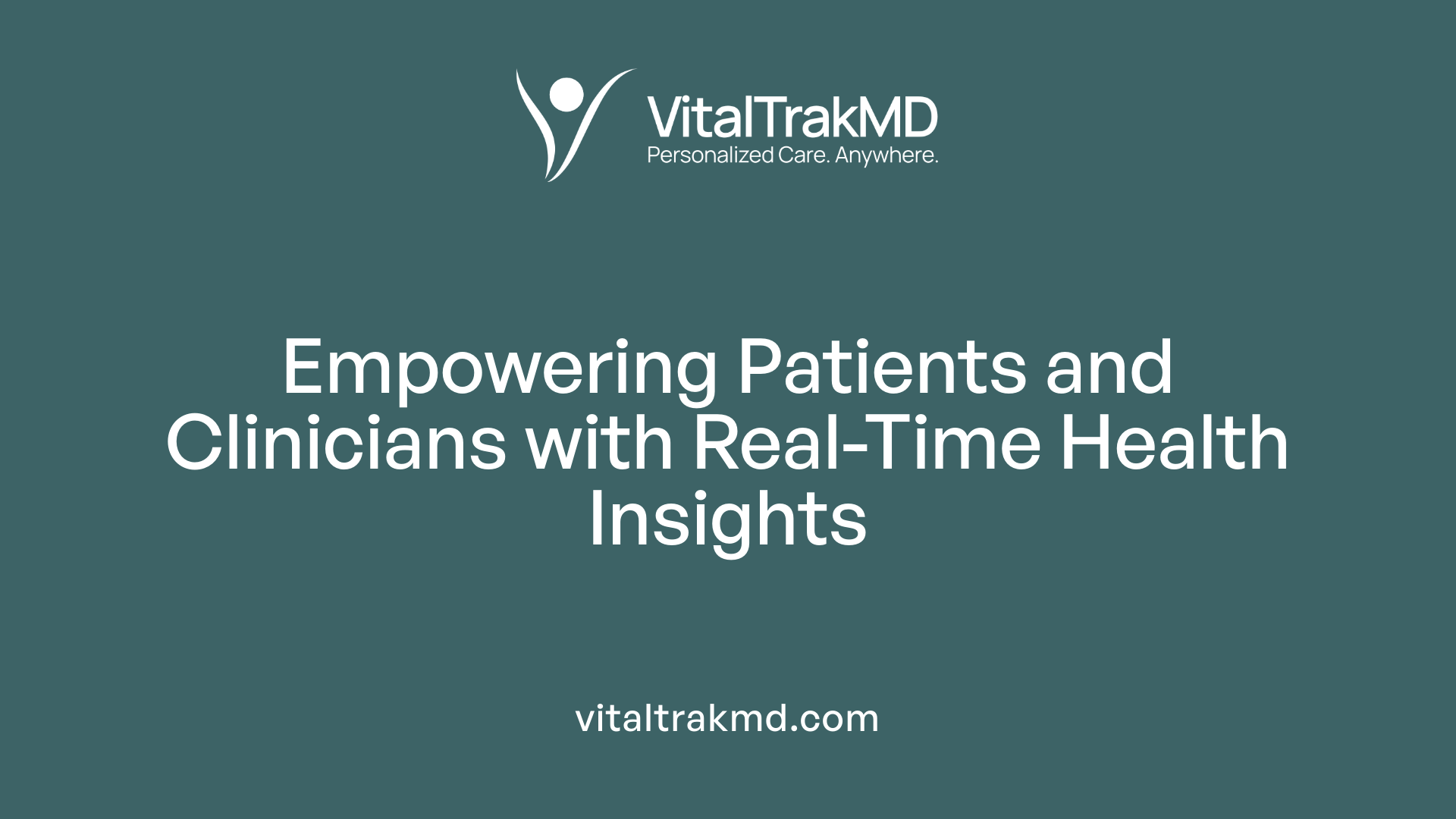
How does VitalTrak improve upon or differ from traditional telemedicine systems?
VitalTrak elevates the standard of telemedicine by introducing continuous and real-time patient monitoring, moving beyond the basic remote consultations typical of traditional systems. While conventional telemedicine mainly focuses on scheduled virtual visits, VitalTrak’s technology incorporates advanced sensors and data analytics that enable ongoing health tracking.
This proactive approach allows healthcare providers to observe vital signs and health metrics constantly, such as blood pressure or heart rate, and intervene early if any irregularities are detected. For example, for chronic conditions like hypertension, patients can wear cuffless blood pressure sensors connected to VitalTrak’s platform. These devices automatically transmit data via mobile apps or wireless connections, enabling immediate review by clinicians.
The integration of mobility-friendly tools like smartphone apps ensures that patients can easily adhere to monitoring routines without significant inconvenience. As a result, VitalTrak facilitates more comprehensive health management, helping prevent complications before they escalate. Its continuous data collection supports a more personalized treatment approach, providing clinicians with current information to make timely, informed decisions.
In summary, VitalTrak transforms traditional telemedicine into a more dynamic, ongoing care system. It enhances health outcomes through persistent monitoring, early detection, and improved patient engagement, offering a seamless, data-rich experience that surpasses the capabilities of conventional remote healthcare services.
The Future of Remote Healthcare: A Data-Driven Approach
VitalTrak exemplifies how innovative remote monitoring solutions elevate healthcare beyond traditional telemedicine. By enabling continuous, real-time data collection and intelligent analysis, it empowers clinicians to deliver proactive, personalized care. This not only enhances patient engagement but also leads to better health outcomes, lower hospital readmissions, and a more efficient healthcare system. As technology progresses, VitalTrak’s pioneering platform signifies a crucial step toward a future where remote healthcare is more connected, predictive, and patient-centric.
References
- Telemedicine vs. Traditional Healthcare: Understanding the Key ...
- Remote Patient Monitoring vs. Traditional Telehealth Programs
- Comparing the Effectiveness of Telemedicine and Traditional ...
- New Approaches to Evaluating and Monitoring Blood Pressure - PMC
- Remote Patient Monitoring vs. Traditional Telehealth Programs
- Telemedicine vs. Traditional Healthcare: Understanding the Key ...
- Telehealth vs. Traditional Healthcare: A Comparative Analysis - Updox
- Telemedicine vs. Traditional Healthcare: Understanding the Key ...
- Telehealth vs. Traditional Healthcare: A Comparative Analysis
Recent articles
Want to Feel Better and Live Healthier?
Join hundreds of patients taking control of their health with personalized care that fits their life – not the other way around.
Rated 4.8/5 by 32+ customers



